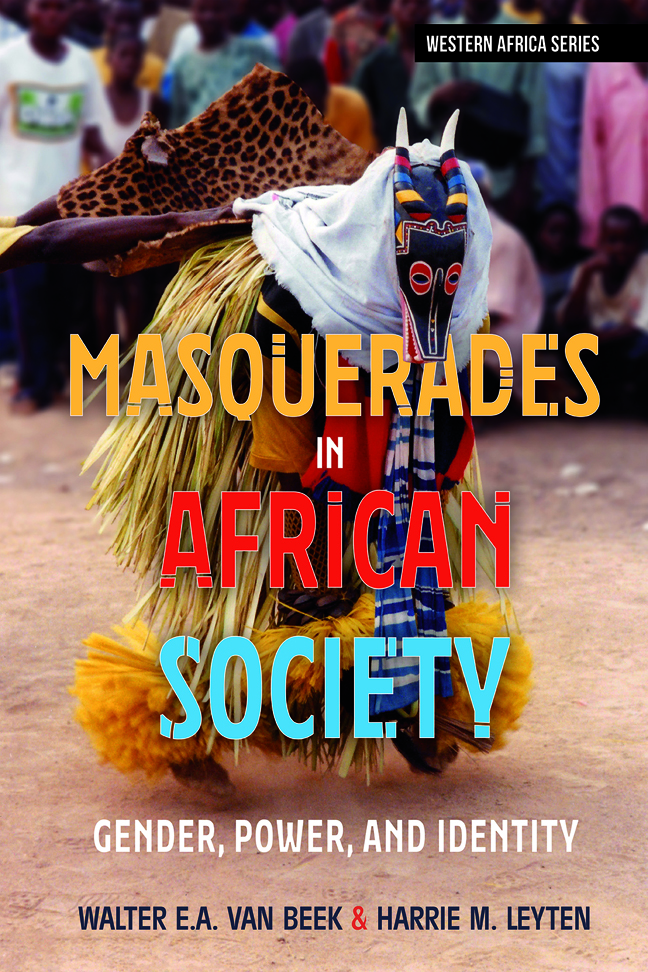Book contents
- Frontmatter
- Dedication
- Contents
- List of Illustrations
- Acknowledgements
- Introduction
- The Mask Crescent: Distribution of Masks and Masking in Africa
- 1 Mask Distribution and Theory
- 2 What is a Mask?
- 3 Masks and Masculinity: Initiation
- 4 Secrecy and Power
- 5 Death and its Masks
- 6 Women: Pivot of the Masks
- 7 Masks and Politics
- 8 Masks and the Order of Things
- 9 Masks and Modernity
- 10 Memories of Power, Power of Memories
- 11 Conclusion
- Bibliography
- Sources for Ethnographic Cases
- Picture Credits
- Index
6 - Women: Pivot of the Masks
Published online by Cambridge University Press: 22 February 2024
- Frontmatter
- Dedication
- Contents
- List of Illustrations
- Acknowledgements
- Introduction
- The Mask Crescent: Distribution of Masks and Masking in Africa
- 1 Mask Distribution and Theory
- 2 What is a Mask?
- 3 Masks and Masculinity: Initiation
- 4 Secrecy and Power
- 5 Death and its Masks
- 6 Women: Pivot of the Masks
- 7 Masks and Politics
- 8 Masks and the Order of Things
- 9 Masks and Modernity
- 10 Memories of Power, Power of Memories
- 11 Conclusion
- Bibliography
- Sources for Ethnographic Cases
- Picture Credits
- Index
Summary
‘The hen fully well knows when dawn is coming, yet she lets the cock make it known to the world.’
(Akan proverb, Rattray 1952: 136)The first mask
Before they became known among people, a group of dye, spiritual beings living in the bush, left the savannah and moved south to the forested area. On their sojourn in what is now Ivory Coast, or so the story goes among the Guro, they met women who were collecting water.
‘Please give us water; we are thirsty.’
The women deliberated among themselves, discussing this normal request from these strange beings. In the end they refused:
‘We have barely enough for ourselves; we will not give you any.’ Disappointed and thirsty, the dye moved on and encountered men who were drinking palm wine.
‘Please give us to drink; we are thirsty.’
Immediately the men cut down a number of palm trees and served them drinks. As they were satisfied, the grateful spirits taught the men how to sing and drum, how to make the costumes of the mask, and how to dance as dye masks. They explained: ‘When we asked the women for a drink, they did not give it, but you, the men, served us drinks. That is why women are forbidden to see us dance. Now we are for you, the men.’
In a dream a sculptor received instructions how to carve the headpiece, and thus the mask was complete – for the men, not for the women.
This Guro myth is typical, for throughout the Mask Crescent stories explaining the appearance of masks are remarkably similar. Origin myths among the Bobo, Senufo, Dogon, Dan, Baule, Guro and many other ethnic groups, relate parallel stories. Almost to a fault it is a woman or a child who first encounters the mask somewhere in the bush, and brings it into the village, and then the men appropriate control over these ‘bush-beings’, excluding the women and children. In fact, two parties are crucial in these tales: women and the bush – two elements that usually are separated, for the bush is male territory. In some cases the bush as such is enough to generate the masks. The initiates of the Dìì in Cameroon learn that a man saw a hedgehog in the bush that rolled up in defence and used the skin of its back to cover its head.
- Type
- Chapter
- Information
- Masquerades in African SocietyGender, Power and Identity, pp. 181 - 218Publisher: Boydell & BrewerPrint publication year: 2023



